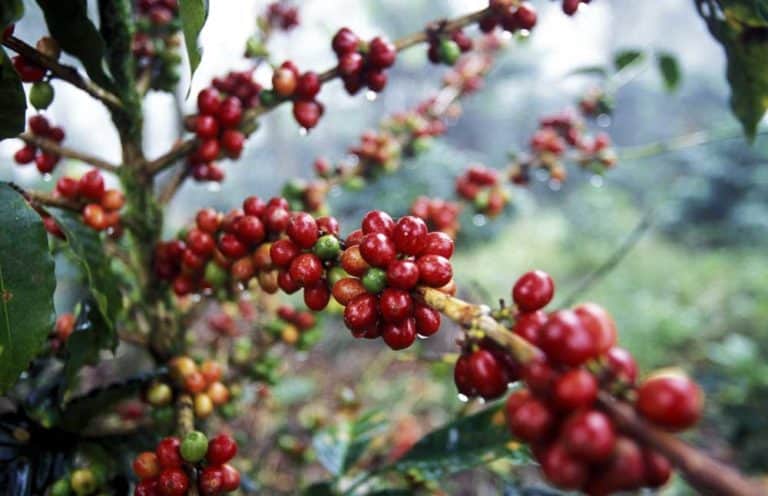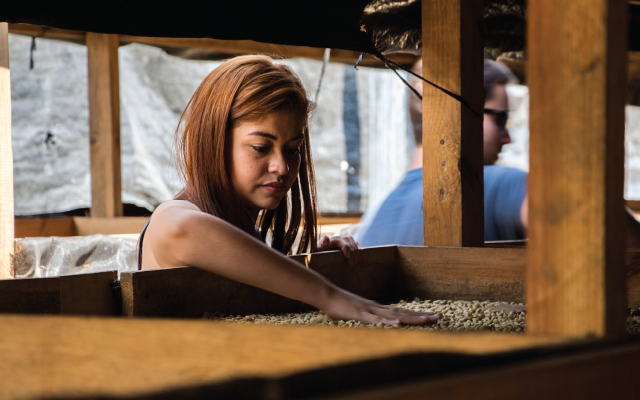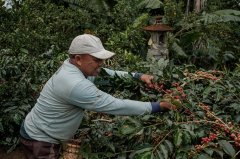A brief History of Coffee Bean cultivation in Honduras present situation and Qi of coffee quality caffeine export in Honduras
Honduras faces the Caribbean Sea to the north and the Pacific Ocean to the south. It is a Central American country with a population of about 9.1 million.
It has a total area of about 43400 square miles and consists mainly of mountains, coastal plains, undeveloped jungles in the northeast and the densely populated Sura River Valley in the northwest.
Generally speaking, the climate is milder in the mountains and more tropical in the lowlands. In such a growing environment, Honduran coffee is hard to taste.
A brief History of Coffee in Honduras
Although the exact origin of Honduran coffee is unclear, many people believe that coffee beans were first introduced to Honduras by Spanish businessmen in the late 1700s.
Available census information collected in the early 1800s shows that farmers have been growing coffee on a small scale throughout the century.
However, despite the efforts of some Honduran presidents to promote coffee beans, bananas quickly became one of the main cash crops in Honduras because of the much shorter time between the first planting and harvest.
Then, in the second half of the 1900s, the number of small-scale farmers growing coffee increased.
Unfortunately, it has encountered many setbacks.
In 1998, for example, Hurricane Mitch destroyed 80% of Honduras's crops, and smugglers had a negative impact on the coffee industry in Honduras by getting better prices for coffee in neighboring Guatemala.
All this changed in the late 1990s.
The Government of Honduras imposed a tax on coffee exports and used the resulting funds to improve access to coffee-growing areas.
In addition, the Government has provided financial incentives to coffee growers, thereby improving the quality and quantity of coffee production.

From commercial to single origin
Initially, Honduran coffee was only used as the basis for mixed coffee.
Although Colombian coffee, its Central and South American neighbour, exports higher-quality coffee, buyers see Honduran coffee as a low-cost commodity because of a lack of quality control.
But all that changed in 2000 with the establishment of Instituto Hondure ñ o del Caf é (IHCAFE). Organization:
Promote Honduran coffee at home and abroad.
Provide technical training for farmers.
Assist in the establishment of nurseries and greenhouses.
Provide low-interest loans for equipment.
Young Hondurans are trained in coffee quality control through their national cup testing school.

Overview of Coffee beans in Honduras
Because of its temperate and tropical climate, coffee produced in Honduras is usually described as mild, full-bodied and sweet.
Honduran coffee beans grow between 3600 and 5249 feet above sea level and can be classified according to altitude and planting area.
Each year, coffee beans are harvested between November and April, and an estimated 2 million Hondurans harvest coffee beans from 90 million coffee trees grown across the country.
For best results, coffee cherries are picked at the stage of red berries during multiple picking, giving coffee beans time to ripen.
Important Notice :
前街咖啡 FrontStreet Coffee has moved to new addredd:
FrontStreet Coffee Address: 315,Donghua East Road,GuangZhou
Tel:020 38364473
- Prev

Shirley coffee bean segmented extraction how to brew good drink? Whisky barrel fermentation process
Intense whisky aroma, rich aromas such as roasted almonds, hazelnuts, cocoa, soft acidity, sweet feeling high, delicate taste. This is the flavor and taste characteristics of Honduran coffee whisky barrel fermented coffee beans. Colombia coffee also uses this method of barrel treatment."Sherry barrel" is the barrel used by sherry distilleries in the whiskey industry to make aging. Sherry is a kind of wine.
- Next

Flavor and taste characteristics of Honduran coffee beans, the most popular coffee brand in Central and South America
What makes coffee in Honduras special? You know, there are countless excellent coffees in Central and South America. Why do Colombian coffee and Brazilian coffee stand out from the crowd? Let's take a look at the uniqueness of Honduran coffee on Qianjie today. The most luxuriant and purest coffee growing place in the region: unfortunately, the United States
Related
- Detailed explanation of Jadeite planting Land in Panamanian Jadeite Manor introduction to the grading system of Jadeite competitive bidding, Red bid, Green bid and Rose Summer
- Story of Coffee planting in Brenka region of Costa Rica Stonehenge Manor anaerobic heavy honey treatment of flavor mouth
- What's on the barrel of Blue Mountain Coffee beans?
- Can American coffee also pull flowers? How to use hot American style to pull out a good-looking pattern?
- Can you make a cold extract with coffee beans? What is the right proportion for cold-extracted coffee formula?
- Indonesian PWN Gold Mandrine Coffee Origin Features Flavor How to Chong? Mandolin coffee is American.
- A brief introduction to the flavor characteristics of Brazilian yellow bourbon coffee beans
- What is the effect of different water quality on the flavor of cold-extracted coffee? What kind of water is best for brewing coffee?
- Why do you think of Rose Summer whenever you mention Panamanian coffee?
- Introduction to the characteristics of authentic blue mountain coffee bean producing areas? What is the CIB Coffee Authority in Jamaica?

